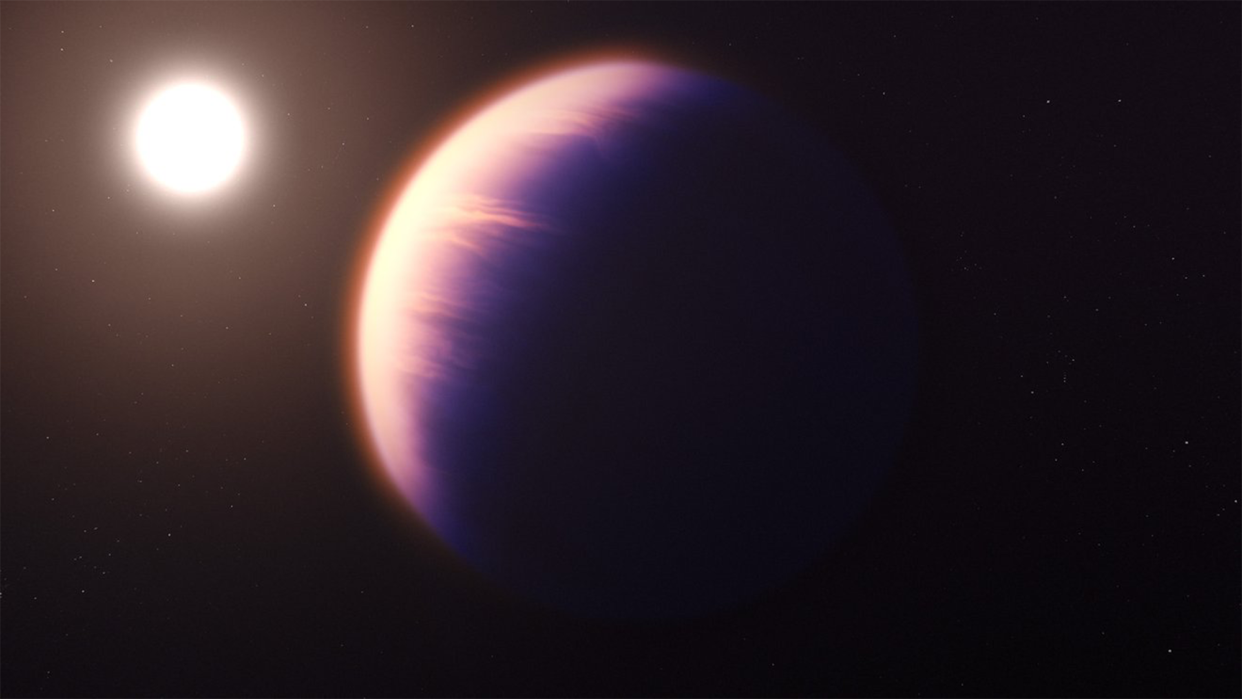A massive cotton candy-like exoplanet stumps astronomers

Low-density “cotton candy planets'' continue to be a cosmic puzzle for astronomers. Despite being 50 percent bigger than the gas giant Jupiter, exoplanet WASP-193b is seven times less dense. This extremely low density is comparable to that of light and fluffy cotton candy, according to a study published May 14 in the Nature Astronomy.
"WASP-193b is the second least dense planet discovered to date, after Kepler-51d, which is much smaller," Khalid Barkaoui, a study co-author and postdoctoral researcher at the University of Liège in Belgium, said in a statement.
According to the team, WASP-193b’s extremely low density makes it a major anomaly among the over 5,000 exoplanets scientists have discovered.
“Its extremely low density makes it a real anomaly among the more than five thousand exoplanets discovered to date,” said Barkaoui. “This extremely-low-density cannot be reproduced by standard models of irradiated gas giants, even under the unrealistic assumption of a coreless structure.”
[Related: These ‘super puff’ planets have the same density as cotton candy.]
WASP-193b is about 1,200 light-years from Earth. It was initially spotted by the Wide Angle Search for Planets (WASP) in 2009. This international collaboration of academic institutions operated one robotic observatory in the northern hemisphere and one in the south. Each observatory used multiple wide-angle cameras to measure the brightness of thousands of individual stars across the sky. The WASP-South observatory detected periodic dips in light–called transits–from the star WASP-193. These periodic dips in brightness were consistent with a planet passing in front of the star every 6.25 days. Astronomers then measured the amount of light that the planet blocked with each transit, giving them an estimate of the planet’s size.
In this study, the team used observations taken from the TRAPPIST-South and SPECULOOS-South observatories in Chile to measure the WASP-193b’s signal in different wavelengths and make sure it was a planet. They also used data collected by the HARPS and CORALIE spectrographs to measure the planet’s mass .
All of these measurements surprisingly concluded that WASP-193b has a staggeringly low density. Its mass and its size are about 0.14 and 1.5 that of Jupiter. That means its density is about 0.059 grams per cubic centimeter. By comparison, cotton candy’s density is about 0.05 grams per cubic centimeter and Earth’s is 5.51 grams per cubic centimeter.
“The planet is so light that it’s difficult to think of an analogous, solid-state material,” study co-author and Massachusetts Institute of Technology planetary scientist Julien de Wit said in a statement. “The reason why it’s close to cotton candy is because both are pretty much air. The planet is basically super fluffy.”
The team believes that WASP-193b is mostly made from hydrogen and helium. These gasses likely form a hugely inflated atmosphere that is tens of thousands of miles farther than Jupiter’s own stormy atmosphere. It is not yet known exactly how a planet can inflate so much, since pumping up this much requires a significant deposit of energy deep in the planet's interior.
[Related: Watch 17 years of an exoplanet’s journey in only 10 seconds.]
“We don’t know where to put this planet in all the formation theories we have right now, because it’s an outlier of all of them,” Francisco Pozuelos, a study co-author and astronomer at Instituto de Astrofisica de Andalucia in Spain, said in a statement. “We cannot explain how this planet was formed. Looking more closely at its atmosphere will allow us to constrain an evolutionary path of this planet.”
In future work, the team hopes that measurements taken with the James Webb Space Telescope (JWST) will help reveal the mechanisms that are behind this bouncy castle level of inflation.

